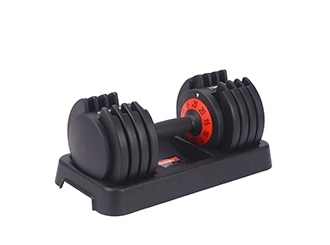


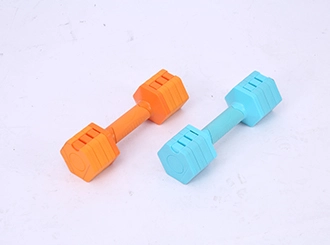



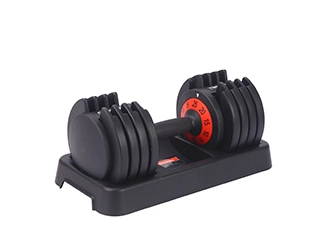



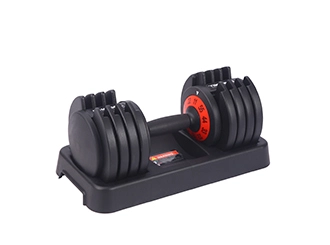




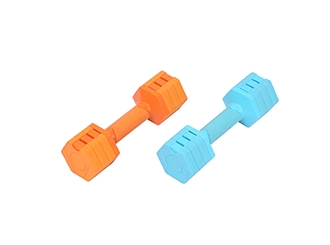
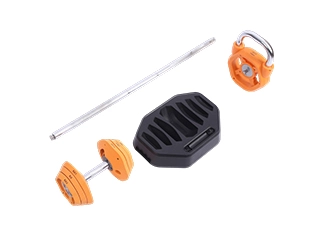




























The fitness equipment industry is experiencing a significant shift toward sustainability as consumers become increasingly aware of environmental issues. This trend is particularly relevant for products such as dumbbells and kettlebells, which are widely used in home and commercial fitness settings. Sustainable production practices not only help reduce the environmental footprint of manufacturing but also resonate with eco-conscious consumers, potentially leading to increased market share. This research paper explores eco-friendly materials and practices in the production of adjustable dumbbells and kettlebells.
One of the primary considerations in sustainable fitness equipment production is the choice of materials. Traditional dumbbells and kettlebells are often made from metal, rubber, or plastic, each of which has its environmental implications. However, several innovative and sustainable alternatives are emerging in the market.
Recycled Materials: Utilizing recycled metals and plastics can significantly reduce the carbon footprint associated with raw material extraction and processing. For instance, producing adjustable dumbbells from recycled steel not only conserves resources but also lowers energy consumption during manufacturing. Companies that incorporate recycled materials can market their products as more environmentally friendly, appealing to eco-conscious consumers.
Biodegradable Plastics: In the case of plastic components, manufacturers can explore biodegradable options. Bioplastics, derived from renewable sources such as corn starch or sugarcane, can provide a sustainable alternative to traditional plastics. Although still in the early stages of adoption, bioplastics present an opportunity for companies to differentiate their products in a crowded market.
Natural Rubber: For rubber-coated weights, natural rubber sourced from sustainable plantations is an eco-friendly option. Unlike synthetic rubber, which is derived from petroleum, natural rubber is biodegradable and has a lower environmental impact. Brands emphasizing natural materials can appeal to health-conscious consumers who also prioritize sustainability.
Beyond material selection, manufacturers can adopt sustainable practices throughout their production processes. Implementing these practices can enhance operational efficiency, reduce waste, and minimize energy consumption.
Energy Efficiency: Investing in energy-efficient machinery and renewable energy sources, such as solar or wind power, can significantly reduce the carbon footprint of manufacturing facilities. By employing energy-efficient technologies, companies can lower operational costs while contributing to a more sustainable production model.
Waste Reduction: Implementing lean manufacturing principles can help reduce waste in the production of dumbbells and kettlebells. Techniques such as recycling scrap materials, minimizing packaging waste, and optimizing production processes can lead to a more sustainable operation. For example, using modular designs can allow for easier disassembly and recycling at the end of a product’s lifecycle.
Sustainable Supply Chain: Establishing a sustainable supply chain involves selecting suppliers who adhere to environmentally friendly practices. This may include sourcing materials from companies that prioritize responsible forestry, mining, and production. Additionally, manufacturers can engage in transparent sourcing practices, allowing consumers to trace the origins of the materials used in their products.
As sustainability becomes a significant factor in purchasing decisions, companies must effectively communicate their eco-friendly initiatives to consumers. Educating customers about the benefits of sustainable fitness equipment can enhance brand loyalty and encourage more conscious purchasing behaviors.
Transparency in Marketing: Brands should provide clear information about the materials used in their products and the sustainability practices employed in their production. Certifications from recognized environmental organizations can add credibility to these claims.
Community Engagement: Involving consumers in sustainability initiatives, such as recycling programs or community clean-up events, can foster a sense of connection between the brand and its customers. This engagement can help build a loyal customer base that values environmental responsibility.
Feedback and Improvement: Actively seeking consumer feedback on sustainability efforts can provide valuable insights into areas for improvement. Engaging with customers through surveys or social media can help brands stay attuned to evolving consumer expectations regarding sustainability.
The push for sustainability in the fitness equipment industry is gaining momentum, driven by consumer demand and the urgent need to address environmental challenges. By incorporating eco-friendly materials, adopting sustainable manufacturing practices, and engaging consumers in sustainability efforts, manufacturers of adjustable dumbbells and kettlebells can position themselves as leaders in the market. As this trend continues to evolve, brands that prioritize sustainability will not only reduce their environmental impact but also enhance their reputation and market competitiveness in the growing fitness equipment sector.